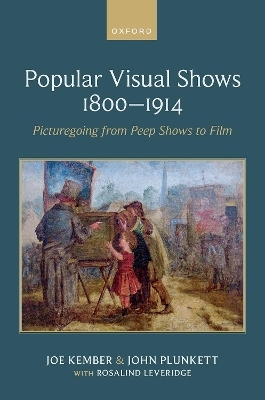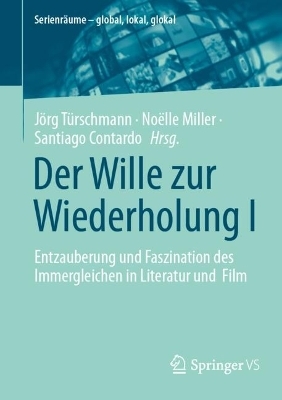
Popular Visual Shows 1800–1914
Oxford University Press (Verlag)
978-0-19-284986-1 (ISBN)
- Noch nicht erschienen (ca. Mai 2025)
- Versandkostenfrei innerhalb Deutschlands
- Auch auf Rechnung
- Verfügbarkeit in der Filiale vor Ort prüfen
- Artikel merken
This book tells the story of the growth of picturegoing as a popular habit between 1800 and 1914. Encouraged by urbanisation and changes in transportation, education, and leisure patterns, the regular and widespread provision of exhibitions and shows became a defining characteristic of cultural life. Painted panoramas and dioramas awed with enormous tableaux; the stereoscope immersed viewers in a 3D world; the many varieties of peepshow promised a marvellously garish experience of patriotic battles, gruesome murders, and far-off places. If that was not enough, the ever-versatile magic lantern projected hundreds of thousands of slides of every imaginable subject, from travelogues and temperance tales to illustrated hymns and adaptations of popular fiction. Then, after 1896, audiences experienced the cinematograph, and were able to enjoy film at the many fixed venue cinemas that emerged from around 1908.
Moving and projected images were displayed not only in town halls, theatres, and other large exhibition spaces, but also in workhouses, schools, churches, empty shops, and fairgrounds. Picturegoing, in all its variety, became a national pastime, integrating itself more and more pervasively into the structures of everyday life as the nineteenth and early twentieth centuries progressed. Drawing on a wealth of new evidence, this book details the shows that were on offer, where and what they were, the networks and infrastructure they existed within, and, above all, how their audiences experienced them.
Joe Kember is a Professor in Film and Visual Culture at the University of Exeter. His research interests include early and silent cinema, Victorian and Edwardian popular entertainments including the magic lantern, theories of film affect, and issues concerning the representation of performance. He has held research awards from the AHRC and other funders, and his book publications include Marketing Modernity: Victorian Popular Shows and Early Cinema (2009). He is interested in the historical development of media across the nineteenth and twentieth centuries, and in finding ways to broaden their study across multiple and varied user groups. John Plunkett is an Associate Professor at the University of Exeter; his interdisciplinary research focuses on early forms of moving, projected and 3D images, most notably panoramas, dioramas, stereoscopy, peepshows and the magic lantern, and the many usages of visual shows and media in nineteenth-century society. He has held grants from the AHRC, Leverhulme Trust and Yale Centre for British Art to support his research; previous books include Queen Victoria - First Media Monarch (OUP, 2003). More broadly, he is interested in the way that the emergence of new media and technologies during the Victorian period continue to influence contemporary culture and digital media.
| Erscheint lt. Verlag | 22.5.2025 |
|---|---|
| Verlagsort | Oxford |
| Sprache | englisch |
| Maße | 156 x 234 mm |
| Themenwelt | Literatur ► Essays / Feuilleton |
| Kunst / Musik / Theater ► Film / TV | |
| Geisteswissenschaften ► Sprach- / Literaturwissenschaft ► Anglistik / Amerikanistik | |
| Geisteswissenschaften ► Sprach- / Literaturwissenschaft ► Literaturgeschichte | |
| ISBN-10 | 0-19-284986-7 / 0192849867 |
| ISBN-13 | 978-0-19-284986-1 / 9780192849861 |
| Zustand | Neuware |
| Haben Sie eine Frage zum Produkt? |
aus dem Bereich


